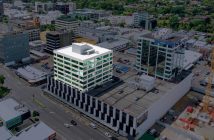The Covid environment impacts on future work patterns are still emerging in the Hamilton office market. Vacancy rates for poor quality stock continue to rise, while recently completed Grade A space is fully occupied and quality cost effective Grade B space remains in demand. The availability and volume of quality sub-lease space that has been evident in Auckland, Wellington, and Christchurch, has not been apparent in Hamilton to date.
The latest bi-annual survey conducted between NAI Harcourts and CBRE Research shows:
The overall net change in occupied office stock was positive by 7,700sqm
Over the six-month period from December 2020 to June 2021, overall vacancy decreased by 0.1%, from 8.2% to 8.1%
Total office accommodation in the Hamilton CBD increased by 10,600sqm to 271,660sqm
The impact of Lockdown this year was in vast contrast to March 2020, as we knew what was likely to be in store for us going forward. This years lockdown enabled businesses to take stock of their likely future requirements and gave them the time to investigate their market options – this has created urgency, as quality A and B Grade space remains in relatively limited supply.
While overall vacancy sits at 8.1%, it needs to be made clear that Grade A vacancy declined to 3.1% and Grade B to 4.6%. The addition of 12,680 sqm of fully occupied A grade quality space in the Tristram Precinct (Waikato Regional Council, WSP, Spark) has assisted with the proportional decrease in vacancy, while there were no new vacancies in this grade. In contrast however, Grade D experienced a significant increase in vacancy over the last six months reaching a 12-year high of 15.8%, while Grade E sits at 16.9%. Despite being a cost-effective option for occupiers, these grades are increasingly difficult to lease, as occupiers look to provide modern and engaging work environments, in an attempt to attract and retain quality staff.
Grade C saw a 1.9% decrease in vacancy, moving from 6.9% in December 2020 to 5.0% in June 2021. This is primarily due to three individual sizeable take-ups over 500 sqm, including Sweet Pea taking up 600 sqm at the corner of Rostrevor and Harwood Streets, Wise Group committing to 560 sqm at 290 Tristram Street, and a new tenant leasing 542 sqm on Level 3 in the former ASB building at 214 Collingwood Street.
Over the last 10 years there has been an evolutionary change in the availability of quality office space, which has also been the catalyst for increased occupier demand. With their first project in 2013, Stark Property were the first to refurbish existing buildings to an exceptionally high standard without tenant pre-commitment, when others remained cautious and conservative. This has led us to today, where we see a broad range of owners and other developers taking up the challenge to provide modern and flexible workplaces.
Volume of office stock over the last 10 years:
Grade A & B has increased from 15% of CBD office stock to an impressive 35% today
Grade C has remains relatively stable, reducing from 39% to 34% today
Grade D & E has decreased from a staggering 47%, to 32% today
The survey suggests demand for quality office space is evident amongst professional, scientific and technical services occupiers is trending upward toward pre-Covid levels. Health Care and Social Assistance and Public Administration and Safety occupiers are the second and third largest industry occupiers. As witnessed in the second half of 2020, these two categories nationwide have seen growing space requirements as New Zealand continues to battle with the pandemic. A large majority of these occupiers are deemed to be ‘essential’ services. The pandemic is also likely to shift occupier demand toward greener, healthier, and more sustainable alternatives.
The Hamilton CBD continues to see increased corporate and government demand for new build options, as is evidenced by Rabobank head office and AA insurance moving into Union Square through October, along with a multitude of smaller occupiers with changing space requirements or those looking to take up residence within the CBD. The reasons are varied, but increased business and social engagement, as well as the hospitality, retail and recreational amenities on offer within the central city, are seen as key factors.
For a full copy of the latest CBD Retail Occupancy Survey either:
Email: hamilton@naiharcourts.co.nz
Linkedin: NAI Harcourts Hamilton






